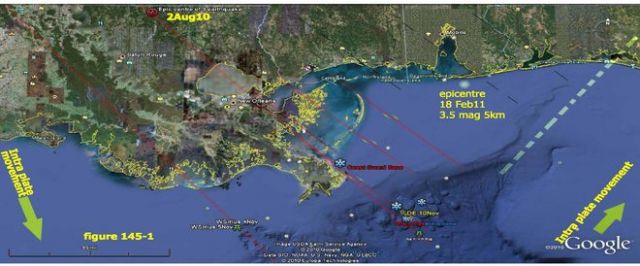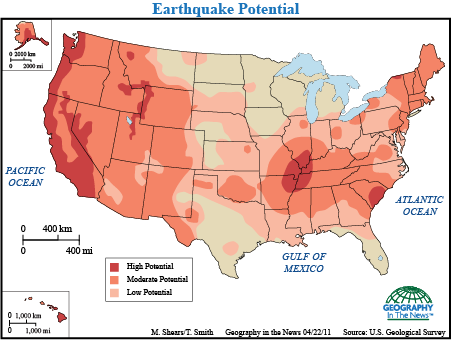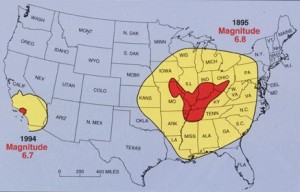| Online: | |
| Visits: | |
| Stories: |
Earthquake Updates: Latest Areas Shook: Oklahoma Hit With 4.3 Quake, Baja California 4.4 (Video)
Wednesday, April 8, 2015 18:04
% of readers think this story is Fact. Add your two cents.
(N.Morgan) In this latest earthquake update, Oklahoma was shaken by a 4.3 magnitude earthquake and across the country, Baja California was rattled by a 4.4 magnitude earthquake.
Is this increasing seismic activity cause for alarm?

The size and severity of these quakes are on an uptick and the frequency of these events are increasing daily.
Another question that must be posed is are these quakes a natural moving of the plates beneath the surface or are these quakes being caused by Fracking?
As we’ve discussed in previous articles the New Madrid always comes to mind when we see an increase of seismic activity.
As you can see from the graph above, these areas are connected through this fault line.
Could this set of a domino effect cause a major earthquake?
A disastrous event that could leave the US in shambles?

In May, the federal government simulated an earthquake so massive, it killed 100,000 Midwesterners instantly, and forced more than 7 million people out of their homes. At the time, National Level Exercise 11 went largely unnoticed; the scenario seemed too far-fetched — states like Illinois and Missouri are in the middle of a tectonic plate, not at the edge of one. A major quake happens there once every several generations.
National Level Exercise 11, or NLE 11, was, in essence, a replay of a disaster that happened 200 years earlier.
On Dec. 16, 1811, a magnitude 7.7 earthquake hit the New Madrid fault line, which lies on the border region of Illinois, Indiana, Missouri, Arkansas, Kentucky, Tennessee and Mississippi.
It’s by far the largest earthquake ever to strike the United States east of the Rockies. Up to 129,000 square kilometers [50,000 square miles] were hit with “raised or sunken lands, fissures, sinks, sand blows, and large landslides,” according to the U.S. Geological Service.
“Huge waves on the Mississippi River overwhelmed many boats and washed others high onto the shore.
High banks caved and collapsed into the river; sand bars and points of islands gave way; whole islands disappeared.”
People as far away as New York City were awakened by the shaking.

More quakes, of a similar size, followed. But the loss of life was minimal:
Not too many people lived in the area at the time.
Today, there are more than 15 million people living in the quake zone.
If a similar quake hit, “7.2 million people could be displaced, with 2 million seeking temporary shelter” in the first three days, FEMA Associate Adminsitrator William Carwile told a Congressional panel in 2010. “Direct economic losses for the eight states could total nearly $300 billion, while indirect losses at least twice that amount.”
The latest activity was a 4.0 which struck the New Madrid on April 2nd 2015
.jpg)
References:
http://quakes.globalincidentmap.com/
http://www.wired.com/dangerroom/2011/08/quake-nightmare/
http://www.showme.net/~fkeller/quake/maps7.htm
More Stories Contributed By N. Morgan, Click Here!





